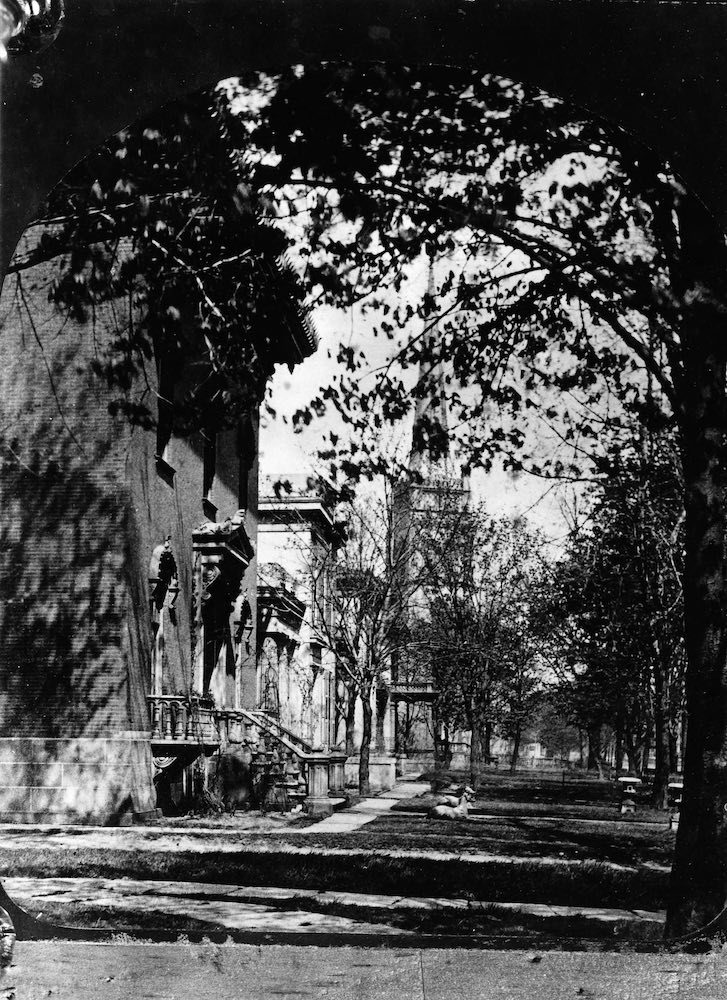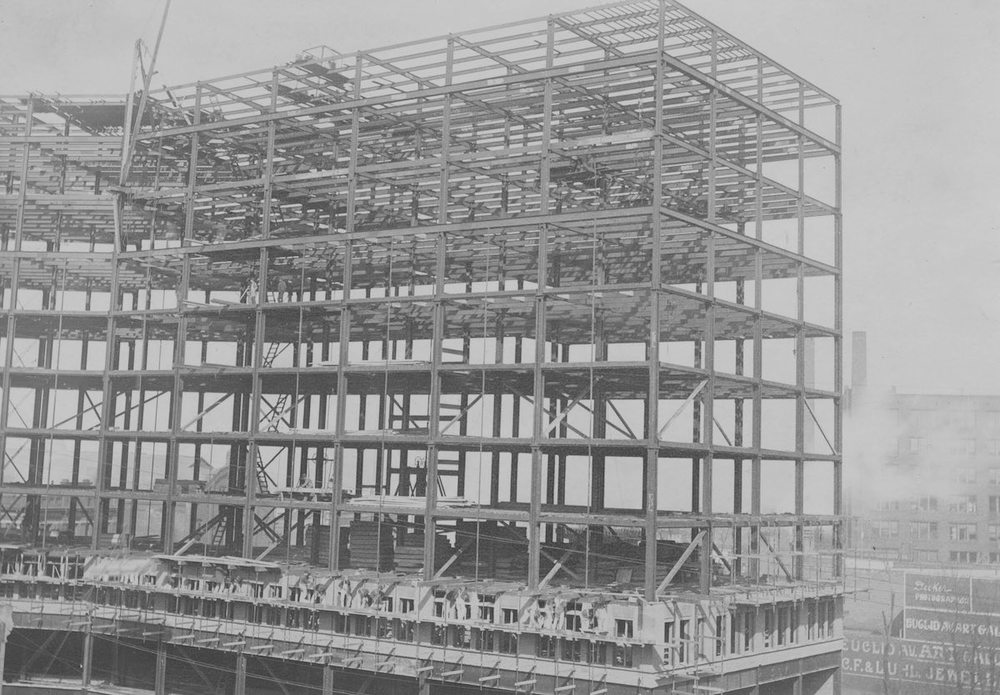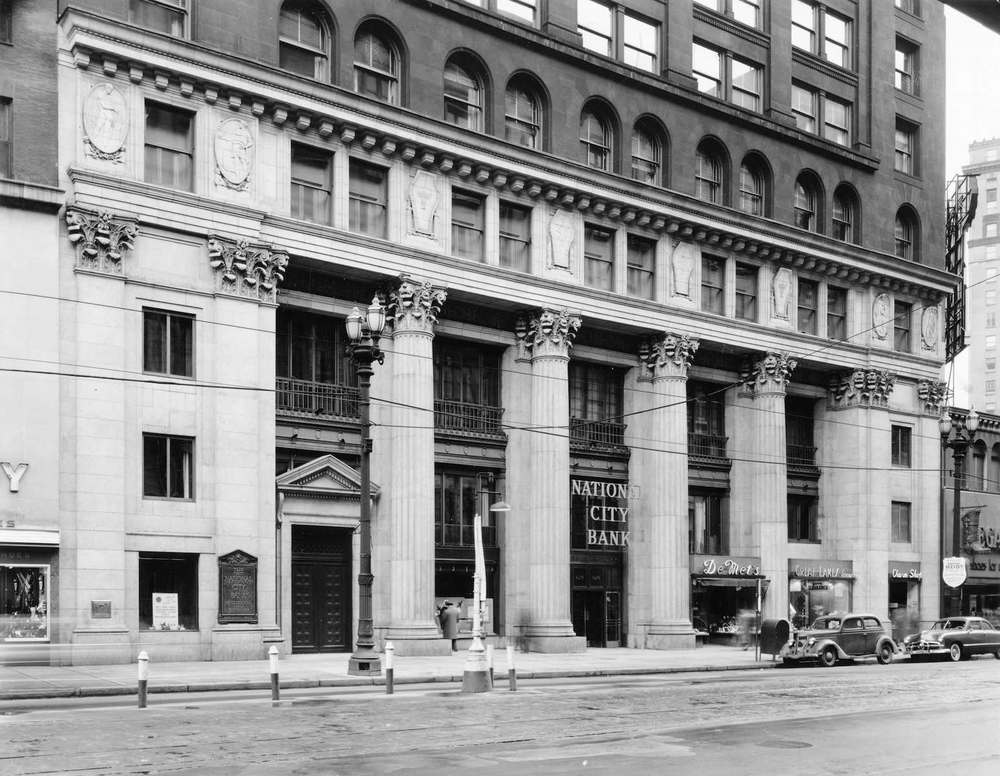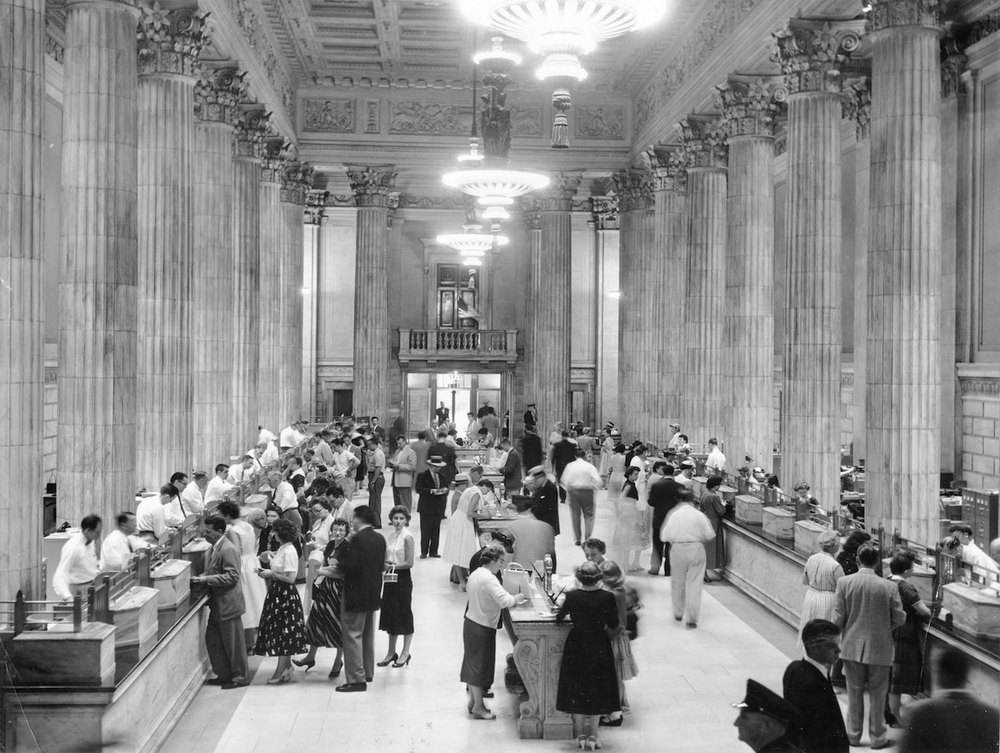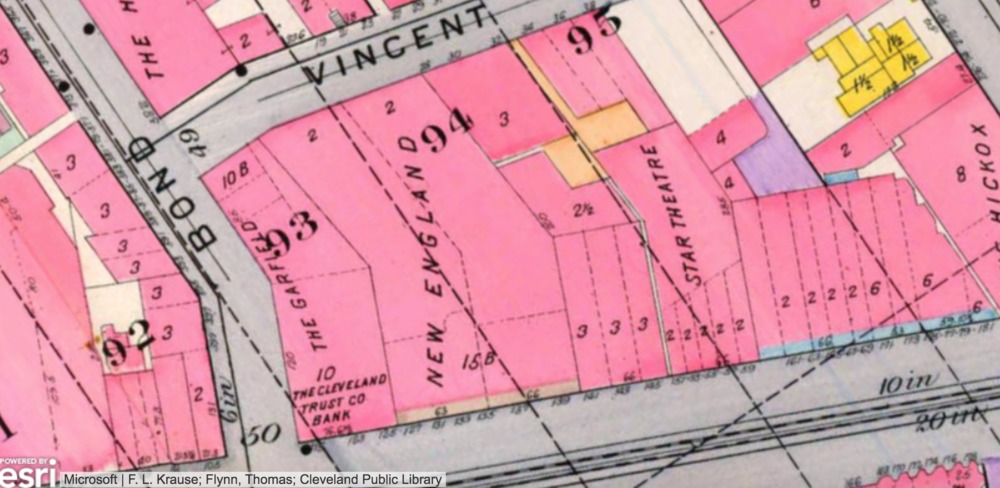New England Building
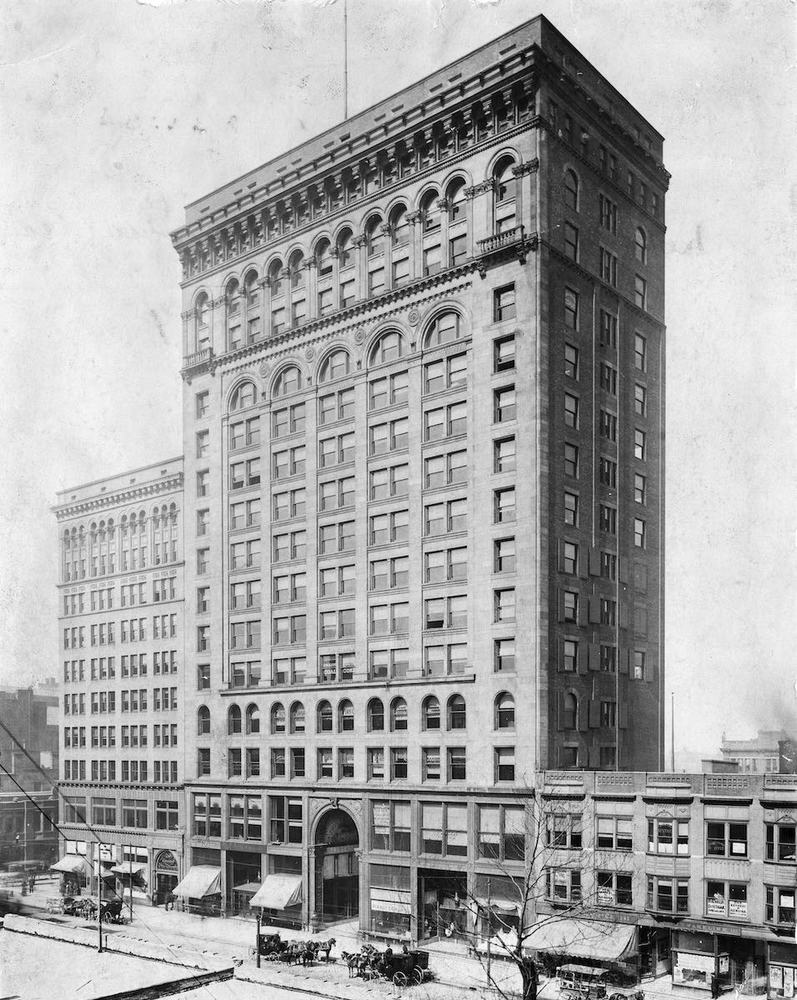
In the late nineteenth century, downtowns in the United States were the center of major commercial expansion and industrial growth. The construction of skyscrapers and tall business buildings was exploding and replacing old structures located in central cities. The New England Building is an example of this trend in the late 1800s. The New England Building, also known as the Guardian Building and the National City Bank Building, was built in 1896 on the property that had formerly held a mansion owned by Henry Chrisholm. The structure was initially called the New England Building after the company constructing it. Still, the plan was for the building to be officially named the Ohio Building with the title throughout the structure. However, this name did not seem to catch on as the building continued to be commonly referred to as the New England Building until about 1916.
At the time of the New England Building's completion, it was the tallest building in Cleveland, and one of the tallest in the country, with fifteen floors. However, it lost its distinction as the city's tallest building in 1905 when the Rockefeller Building was built. The architects of the original design of the New England Building, Shepley, Rutan and Coolidge, were an out-of-state firm located in Boston. Shepley, Rutan and Coolidge's plan was a "sandstone-faced structure" that was "designed with restrained Renaissance detail." Because of its status as the tallest building in the 1890s and its impressive architecture, many businesses and architects moved their offices to the impressive new skyscraper. Many members of the Cleveland Architectural Club, like Charles F. Schweinfurth, relocated to the floors of the New England Building. For about twenty years, the New England Building stood with its original design, with the majority of the floors occupied by business offices.
In 1915, the New England Building was bought by the Guardian Savings and Trust Company for $2,000,000. The Guardian Savings and Trust Company was a widely successful and expanding banking business during the early 1910s. When the leases held by other companies in the New England Building expired, the Guardian Savings and Trust Company hired architects Walker and Weeks, at that time, a relatively new firm, to design rooms for a bank. Walker and Weeks designed an addition added to the back that added 250 rooms, and a new design for the front of the building. Walker and Weeks added the distinctive Corinthian columns to the front of the bank, standing out from the original design of the top of the building. After their role in the redesign of the New England Building, now being called the Guardian Building, Walker and Weeks went on to design more than sixty banks across Ohio.
The New England Building stayed in the hands of the Guardian Savings and Trust Company for close to thirty years. The corporation grew widely in Ohio through the 1920s and was made up of "26 corporations, including investment and real estate firms." However, in March 1933, the Guardian Savings and Trust Company was forced to liquidate. It was discovered that the company mismanaged its customers' money by giving insider loans to members of the company. The National City Bank leased the banking part of the New England Building after the Guardian Savings and Trust Company vacated it, and officially bought the building from the Guardian liquidator for $300,000 on March 28, 1944. From 1944 to 1948, after the National City Bank purchased the New England Building, the third floor housed tenants such as the Veterans Administration and the War Labor Board. After the Veterans Administration and the War Labor Board vacated the New England Building, the National City Bank took up many of the floors for their departments and the banking lobby on the first floor. Beginning June 1, 1949, the National City Bank formally renamed the building, the National City Bank Building.
The National City Bank occupied the banking floor of the New England Building until 2008, when the PNC Bank absorbed the National City Bank. However, the National City Bank moved its executives and departments to a new headquarters that had begun to be built in 1978 and was finished in 1980. In the late twentieth century, the New England Building, like many historic buildings in downtown areas, was not being fully used. The use of historic office buildings fell because of the rising demand for newer office space. The downtown buildings were frequently losing the competition to new office spaces developed in the suburbs.
In an effort to revitalize the building in the late 1990s, a bid was put in for the competition of turning a downtown building into a Holiday Inn Express hotel. In 1997, “Richard Maron, a specialist at bringing old buildings back to life,” bid two-thirds of the New England Building to be converted into the Holiday Inn Express. Despite the competition, Richard Maron won the bid, and to this day, the New England Building is occupied by the Holiday Inn Express.
After the National City Bank was absorbed into the PNC Bank in 2008, the National City Bank located in the New England Building vacated the structure. The bank lobby was empty for many years until the Marble Room converted the old banking rooms into an upscale restaurant and bar. The Marble Room followed the current trend of turning old banking locations into businesses "related to food and dining."
It has been more than 100 years since the New England Building was constructed, and, like other historic buildings still standing in downtown Cleveland, the New England Building has been able to transform itself and continue to be in use for businesses. While the New England Building was an important and record-breaking building at the time of its construction, it is now a historic building that continuously revitalizes itself with the current trends of downtown life.
Images

